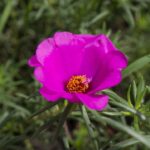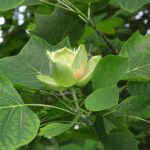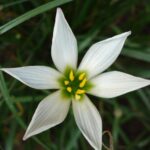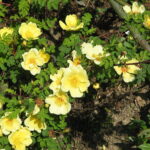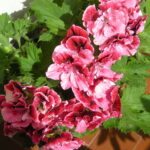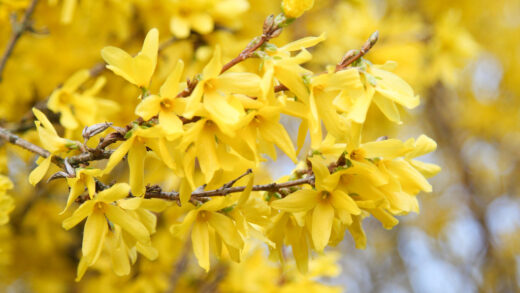The light requirements of the regal pelargonium

Light is the fundamental source of energy for nearly all plants, and for the regal pelargonium, the quality and quantity of light it receives directly governs its ability to produce the magnificent flowers for which it is prized. Through the process of photosynthesis, plants use light energy to convert carbon dioxide and water into the sugars that fuel their growth, development, and flowering. The intensity of light, meaning its brightness, and the duration, or the number of hours the plant is exposed to it each day, are the two key factors that determine how much energy the plant can produce. For a heavy-flowering species like the regal pelargonium, an abundant supply of energy is absolutely essential.
The impact of light on this particular plant is profound and multifaceted. Sufficient light not only provides the raw energy for building the plant’s structure but also acts as a critical signal for various developmental processes, including the initiation of flower buds. Inadequate light will invariably lead to a plant that is weak, stretched, and unable to muster the resources needed to bloom. Therefore, understanding and providing the correct light conditions is not merely a suggestion for good care; it is a prerequisite for achieving the desired floral display. Every other aspect of care, from watering to fertilizing, is dependent on the plant receiving enough light to properly utilize the resources you provide.
A key distinction must be made between the harshness of direct sunlight and the brightness of indirect light. While many common geraniums are sun-lovers that thrive in direct sun, the regal pelargonium is more refined in its preferences. Its leaves are more tender and its flowers more delicate, making them susceptible to damage from intense, direct solar radiation. The ideal light for this species is bright but filtered, providing the high intensity it needs without the damaging effects of direct exposure. This specific requirement often makes it a more challenging plant for beginners but is crucial to its success.
Compared to other members of the Pelargonium genus, the light needs of the regal variety are more specific. They demand bright conditions but are less tolerant of the extreme heat and sun that zonal geraniums can withstand. This sensitivity means that the placement of the plant, whether indoors or outdoors, must be chosen with more care and consideration. Mastering the art of providing perfect lighting is one of the most important skills in cultivating a healthy and floriferous regal pelargonium, directly influencing the density of its foliage, the strength of its stems, and the number of flowers it will produce.
Finding the optimal light exposure
The quest for the perfect light exposure for a regal pelargonium often ends at an east-facing window. This location provides several hours of gentle, direct morning sun, which is bright enough to fuel the plant’s growth without being intense enough to cause harm. As the day progresses and the sun becomes stronger, the light in an east-facing location becomes indirect, offering the bright, filtered conditions the plant loves for the remainder of the day. Alternatively, a location a few feet back from a south or west-facing window, where the plant receives bright ambient light but is shielded from the direct rays of the sun, can also be an excellent choice.
More articles on this topic
One of the most common signs of excessive light exposure is leaf scorch. If your plant is receiving too much direct, intense sunlight, you may notice the leaves developing brown, crispy patches, or the edges may look burnt and dry. The vibrant colours of the flowers may also appear washed-out or faded, and the blossoms themselves may wilt and drop prematurely. If you observe these symptoms, it is a clear indication that you need to move the plant to a location with more protection from the sun, especially during the hottest afternoon hours.
Conversely, a plant that is not receiving enough light will also exhibit clear signs of distress. The most common symptom of insufficient light is etiolation, or “legginess.” The stems will become elongated and stretched as the plant literally reaches for a light source. The spacing between the leaves (the internodes) will increase, giving the plant a sparse and spindly appearance. Critically, a light-starved plant will produce very few, if any, flower buds, as it simply lacks the energy reserves to do so. The foliage may also appear pale green rather than a rich, vibrant colour.
Effectively managing light often involves strategic moderation. If your only available bright location is a south or west-facing window that receives intense afternoon sun, you don’t necessarily have to abandon it. You can easily moderate the light by hanging a sheer curtain in the window. This simple addition will diffuse the direct rays of the sun, providing the bright, filtered light that regal pelargoniums adore. When grown outdoors, placing the plant under the canopy of a larger tree or on a patio with a translucent cover can achieve the same protective effect, shielding it from the harshest sunlight while still allowing plenty of brightness to reach it.
Seasonal variations in light
The position and intensity of the sun in the sky change dramatically throughout the year, and your plant’s location may need to be adjusted to compensate for these seasonal shifts. During the spring and autumn, the sun is lower in the sky, and its rays are less intense. In these seasons, you can often place your regal pelargonium in a location that receives more direct sunlight, such as closer to a south-facing window, without the risk of scorching that would exist in the summer. The goal is to maximize the available light during these periods of active growth.
More articles on this topic
In the peak of summer, the sun is at its highest and most intense. This is the time when protection from direct midday and afternoon sun is most critical. A plant that was perfectly happy in a certain spot in May might show signs of stress and leaf scorch in the same spot by July. During the summer months, you may need to move the plant further back from the window or ensure it is in a location that receives shade during the hottest part of the day, typically between noon and 4 p.m. This adjustment protects the delicate flowers and foliage from heat stress and sun damage.
The winter months present a different challenge: a significant reduction in both light intensity and duration. For a regal pelargonium in its dormant phase, this is actually beneficial, as the lower light levels help to keep the plant in its resting state. The plant should still be placed in a location that receives some indirect light, such as near a cool window, but its needs are minimal. The reduced light of winter is a natural environmental cue that works in conjunction with cool temperatures to enforce the dormancy that is so vital for future flowering.
For gardeners growing these plants in regions with very dark, gloomy winters, supplemental lighting can be a consideration, although it is not typically necessary if the plant is properly dormant. If you are trying to keep a plant in active growth or are starting new cuttings during the winter, a simple fluorescent shop light or a dedicated LED grow light can provide the full-spectrum light needed for healthy development. However, for the purpose of simply overwintering a mature plant, the natural low light of winter is usually sufficient and desirable.
📷Velq1958, CC BY-SA 3.0, via Wikimedia Commons





